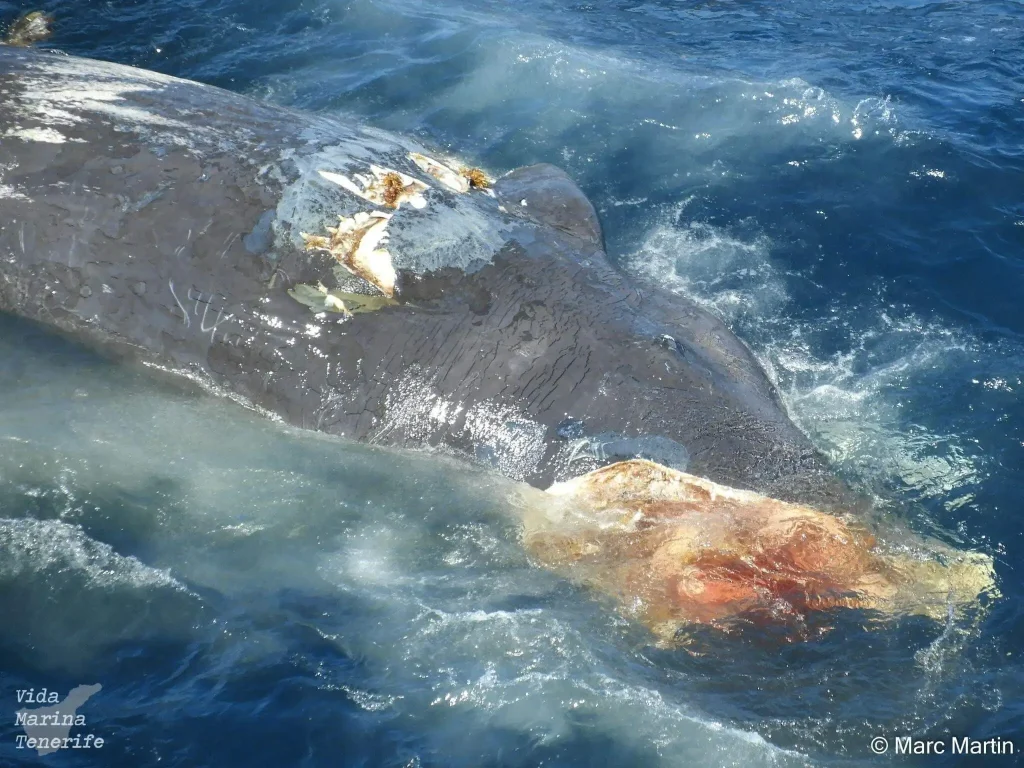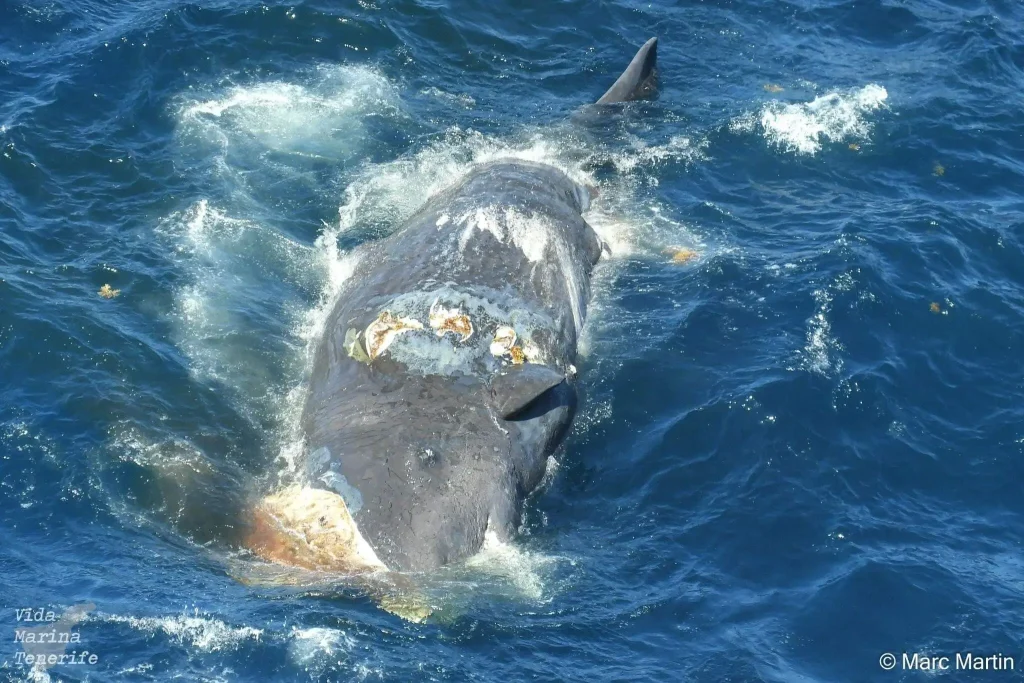Cetacean Collisions In The Canary Islands
Cetacean strandings happen when whales, dolphins, or porpoises end up on the beach or in very shallow water and can’t get back to the sea on their own. Sometimes just one animal is stranded, but other times groups of them get stuck together, especially species that live in tight social groups, like pilot whales.
The origin of cetacean strandings is undoubtedly linked to a combination of environmental or natural and anthropological factors that directly result in disorientation and the weakening of the affected animal. However, in recent years, the number of stranded cetaceans found in the Canary Islands has increased alongside the growing pressure of human activities on the marine habitat (André et al., 2001).
Specifically, collisions with vessels are a major cause of strandings in the Canary Islands, becoming an increasingly serious concern.
The work by Carrillo and Ritter (2010) reports a high number of ship collisions in the Canary Islands, with most incidents occurring around Tenerife and having a particularly significant impact on sperm whales, beaked whales, and pilot whales. Most collisions resulting in serious or fatal injuries are caused by vessels 80 meters in length or longer (Grassa et al., 2019). In the Canary Islands, both cargo ships and ferries pose a risk of collision with cetaceans, but high-speed ferries are especially implicated due to their speed and frequent routes near key whale habitats. These collisions are a risk not only to the animals, but also to passengers on board.
On May 21st, a female sperm whale approximately 9.8 meters long and weighing 8.4 tons was found stranded on Los Roques beach, in the municipality of Fasnia, Tenerife. A necropsy revealed that the whale died from a severe head trauma, with a clean cut over 2 meters long, consistent with an almost immediate death caused by a collision with a large vessel. In addition, a second dead individual with similar injuries was found floating nearby, although it has not yet washed ashore.
In sperm whales, females reach sexual maturity around 8 to 9 meters long, usually at 7 to 10 years old. Reproduction is demanding because pregnancy lasts about 14 to 16 months, followed by a long lactation period of up to two years. The female in this case, measuring 9.8 meters, was likely just starting or recently entered her reproductive stage and may have reproduced only once or not at all. The other individual, a juvenile not yet sexually mature, also hadn’t contributed to population growth. Losing both is a serious blow to the already vulnerable sperm whale population in the Canary Islands.


The loss of these two animals is a significant blow to the sperm whale population in the Canary Islands, which is already vulnerable and faces a slow and difficult recovery. Some studies, such as Fais et al. (2016), estimate that while the population may have once been around 300–400 individuals, it currently stands at approximately 224. The same study also highlights that, since 1999, an average of two sperm whales per year have stranded in the archipelago showing signs of collision with vessels.
Sperm whales sleep in short resting periods during which they adopt a vertical position and remain submerged at shallow depths, thanks to their passive buoyancy. This peculiar way of sleeping, combined with their need to surface for air, makes them especially vulnerable to passing vessels, as they often remain motionless near the surface. When a ship passes through the area, the propeller can strike the whale’s head directly, causing fatal and irreversible injuries.
In conclusion, cetacean strandings in the Canary Islands are a complex issue influenced by both natural and human-related factors. The increasing maritime traffic, particularly the rise of high-speed ferries, has escalated the risk of fatal collisions with vulnerable species like sperm whales. The recent deaths of the 2 sperm whales highlight the urgent need for effective measures to protect these populations. Protecting their habitats and managing vessel traffic more carefully are essential steps to reduce these tragic incidents and support the recovery of the sperm whale population in the region.
Bibliography:
- André, M., Degollada, E., Arbelo, M.A., Andrada, M.A., Fernández, A.J. (2001). Colisiones entre tráfico marítico y cetáceos en Canarias. Universidad de la Palmas de Gran Canaria. 13ª Reunión de la Sociedad Española de Anatomía Patológica.
- Arbelo, M., Los Monteros, A. E., Herráez, P., Andrada, M., Sierra, E., Rodríguez, F., Jepson, P. D., & Fernández, A. (2013). Pathology and causes of death of stranded cetaceans in the Canary Islands (1999-2005). Diseases of aquatic organisms, 103(2), 87–99. https://doi.org/10.3354/dao02558
- Carrillo, M., Ritter, F. (2010). Increasing numbers of ship strikes in the Canary Islands: Proposals for immediate action to reduce risk of vessel-whale collisions. J. CETACEAN RES. MANAGE. 11(2): 131–138
- Fais, A., Lewis, TP., Zitterbart, DP., Álvarez, O., Tejedor, A., Aguilar Soto, N. (2016). Abundance and Distribution of Sperm Whales in the Canary Islands: Can Sperm Whales in the Archipelago Sustain the Current Level of Ship-Strike Mortalities?. PLOS ONE 11(5): e0155199 https://doi.org/10.1371/journal.pone.0150660
- Grassa, J.M., Lloret, A., Jiménez, M., Moreno, I. (2019). Estudio del tráfico marítimo interinsular en relación con colisiones entre buques y cetáceos en las Islas Canarias. CEDEX, Centro de Estudios y Experimentación de Obras Públicas. https://ingenieriacivil.cedex.es/index.php/ingenieria-civil/article/view/2396/1934
